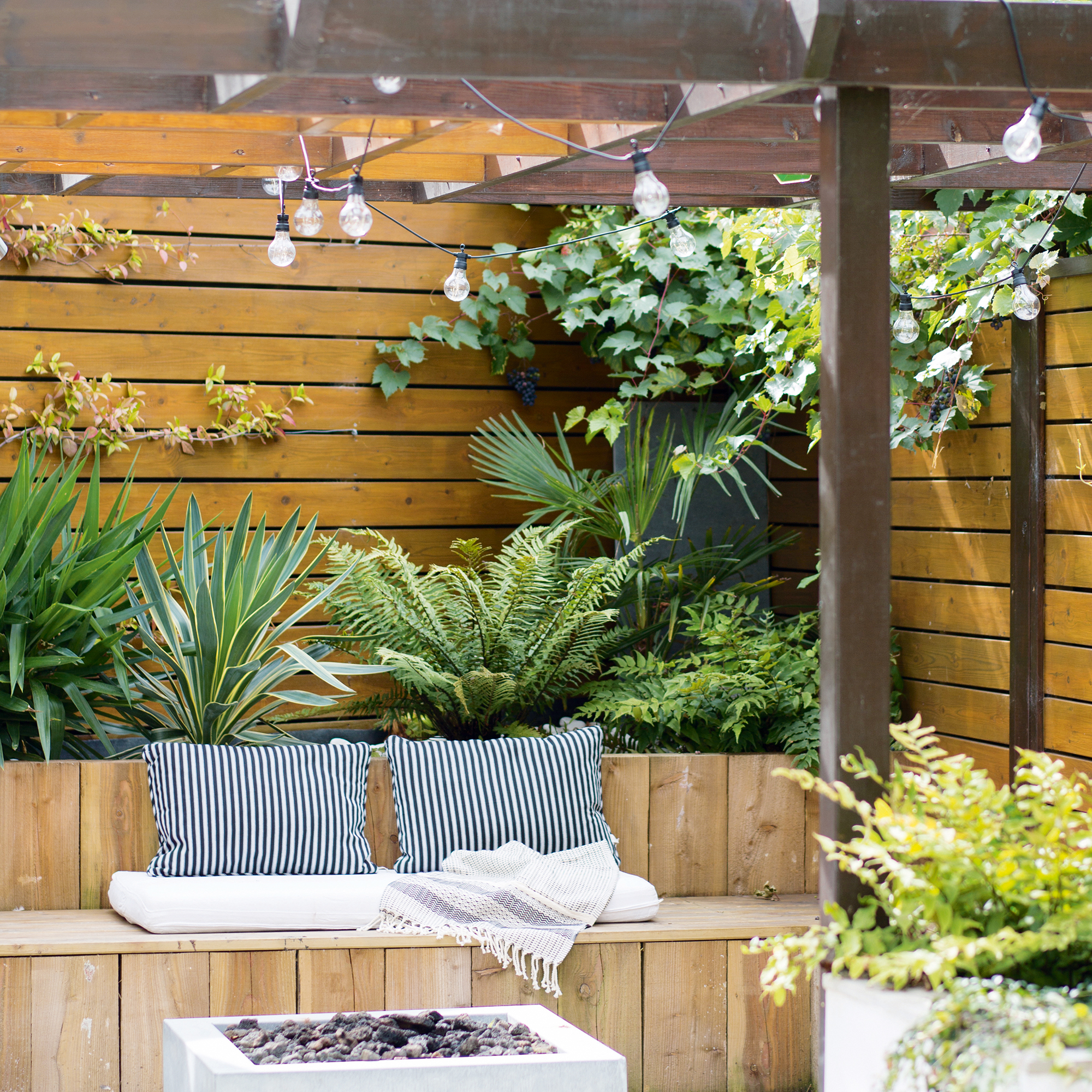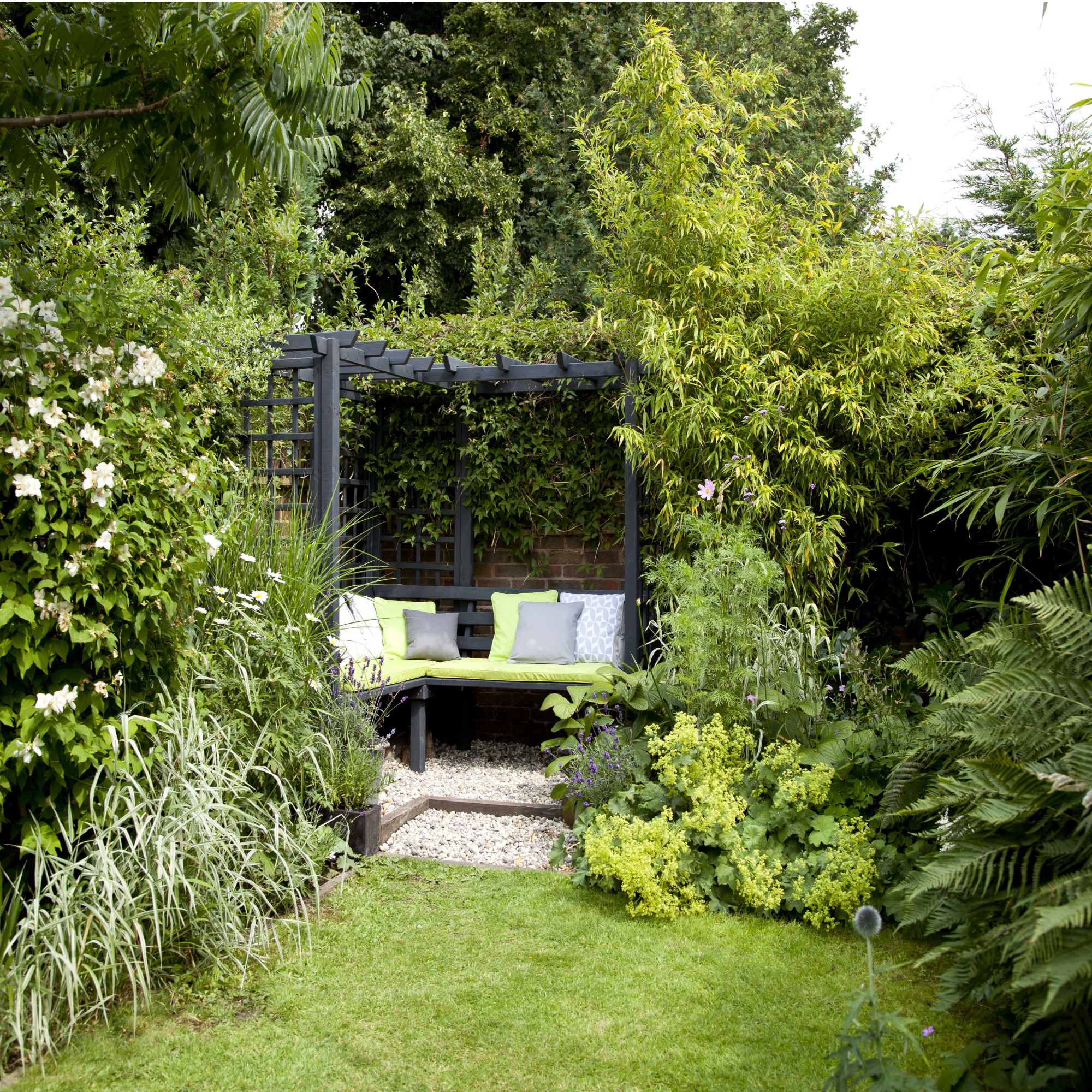
When you’re trying to upgrade your garden on a budget, shelling out for expensive landscapers and builders just isn’t an option. And while building your own is an affordable alternative, there are some things you need to consider when building a pergola.
Yes, it can be hard to ignore the many amazing pergola ideas out there. They can transform an unused area of your garden into a cosy dining space, a shaded hang-out zone, and even a place to house your best garden furniture or one of the best hot tubs. But many people are put off by the price of off-the-shelf pergolas - and rightly so.
If you’re considering building your own pergola, you’ll be happy to know that it’s not only extremely cheap but it’s also very easy to do. But to help you put a plan into action, we’ve asked experts to share the things everyone should know before getting their hammer out of the shed.
7 things to consider when building a pergola
From the planning rules you need to follow to the maintenance involved in having a pergola, this is everything you need to know before building a pergola to ensure you create a stylish and practical addition to your garden.
1. Follow the rules
It’s highly unlikely that you’ll need planning permission to build your own pergola, but it’s still a good idea to double-check with your local council before you start buying the materials - especially if you live in a conservation area, own a listed property, or plan on building a pergola that’s more than half the size of your garden.
Even if you don’t need planning permission, you’re still obligated to abide by the rules. If you don’t, your neighbours can complain, and you could be forced to move or even remove your pergola entirely.
So, what are the rules? Well, they’re as follows:
- A pitched-roof pergola can only be a maximum of four metres high.
- A pergola within two metres of a boundary line can only be a maximum of two-and-a-half metres high.
- A pergola over two metres away from a boundary line can only be a maximum of three metres high.

Off-the-shelf pergolas rarely stand over two-and-a-half metres high, so it’s important to adhere to these height restrictions if you’re building one yourself.
2. Think about the material
Pergolas come in so many different shapes and forms, and building a pergola from scratch allows you to tailor the design and build to your own specifications. So, you need to think about the different materials on offer and which one suits you best.
Pergola expert Sam Jenkinson at Tiger explains, ‘Choosing the right material for a pergola will depend on the homeowner’s design style and budget. Most pergolas are made from either wood or aluminium, and both offer a strong framed structure but have different design aesthetics.’
‘Timber is typically associated with conventional garden buildings and structures and is an elegant and stylish choice. It’s a relatively affordable option and a wooden pergola is easy to paint to match the design of your garden space, which can be updated as and when it changes.’
Because of this, most experts suggest building your own pergola using wood. Not only is this an affordable option, but it’s also the easiest option.

3. Location is key
When building a pergola, you need to choose the perfect location for it. But, ultimately, this all depends on how you plan to use your pergola. Will it provide a light cover for your patio? Will it be an integral part of your outdoor kitchen design? Is it somewhere to grow the best climbing plants?
Sam echoes this, saying, ‘To get the best use out of your pergola, selecting the right location is key and where you choose to place it will depend on how you are planning to use it. The most important thing to remember is that there has to be a reason for it, so it doesn’t look out of place.’
‘Some homeowners decide to attach their pergola to the side of their house to create an outdoor space that’s easy to access. Or combined with another garden building, such as a log cabin or garden room, with the pergola often leading into the other space. Others choose to have it freestanding, using the structure to create a new area within the garden to relax.’
‘One thing to consider is that a pergola needs to be positioned on a solid and hard surface, such as concrete or flagged stone, and you also need to think of the practical issues for where to place it, such as whether it will have an impact on existing plants, block any views or impact the neighbours.’
So, it’s important to understand where you’re going to put your pergola - and it may be that you have to prepare the area before you can even get started.

4. Size is everything
While we already know that there are certain height restrictions when it comes to building a pergola, the beauty of building your own pergola is that you can build it to size (as long as it follows these rules).
This means that you can build it as small or as large as you want, but these dimensions need to be considered before you start building.
Jenny Davis of Forest Garden explains, ‘The size of your pergola should be proportionate to the size of your garden. A large pergola in a small space will look out of place, while a small pergola in a large garden won't be very functional. Consider how you'll use the space and how many people you want to be able to comfortably accommodate.’
When you’ve done that, you can get the measuring tape out and measure how much of your garden you realistically want to cover with your pergola. Then, take exact measurements so you know how tall and wide you want it to be.
5. Consider weatherproofing
The main difference between a pergola and a gazebo is the fact that pergolas don’t have a roof. And while this is perfect for sunny summer evenings, it also means there’s little protection from the wind and rain.
With this in mind, you need to consider weatherproofing when building a pergola. Murray Michel, Product & Technical Expert at Clear Amber says, ‘Adding a lightweight waterproof pergola roof cover to your outdoor space will allow you to entertain all year-round, no matter the weather. It may seem daunting, but it’s much simpler than you think. Just secure roofing sheets with glazing bars and you’re ready to go!’
‘Choose the perfect look for your roof. Opt for solid polycarbonate sheets for a high-quality, virtually unbreakable option with a clear ‘glass look’. If you’re looking for a more affordable yet durable choice, consider multiwall or twinwall polycarbonate sheets. Or, for added texture and visual interest, corrugated roofing sheets are a simple but effective option.’
Alternatively, you could take a leaf out of the best patio cover ideas book and drape fabric over your pergola to create a temporary (and very aesthetically pleasing) cover from the elements.

6. Don’t forget the maintenance
While building a pergola is one of the best ways to make your outdoor seating area look more expensive, pergolas can quickly succumb to the elements. Wooden beams may lose their colour and look weather-beaten, and the whole area can look worn and tired.
So, it’s important to consider the maintenance that comes with a DIY pergola - especially if you have built a wooden pergola.
Sam explains, ‘It’s important that a wooden pergola is regularly maintained to protect against the elements to ensure its longevity. It should be treated as soon as is practical after assembly and then annually thereafter with an appropriate high-quality preservative.’
‘On the other hand, aluminium pergolas are sleek and contemporary, and unlike a traditional wooden pergola, there’s no maintenance. Aluminium designs are typically more expensive, however, they are more durable and have a high-end look to them.’

7. The little touches matter
Anyone can build a pergola in their garden and call it a day. But if you don’t add the little touches, it can look random and out of place. So, think about how you’re going to use your pergola to add some magic to your garden.
If you’re looking to bring a calm garden idea to life, why not opt for some plants? Murray says, ‘To seamlessly blend your pergola with its surroundings, opt for plants like roses, climbing plants such as honeysuckle, ivy, potted trees like lemon trees, and dwarf conifers.’
‘Not only do they add natural charm, but they also contribute to reducing stress and enhancing mental well-being. Investing in plants not only beautifies your pergola but also brings a burst of colour, style, and life to your outdoor space.’
Outdoor lighting is also something you should consider. ‘Adding lighting to your pergola can give the ultimate cosy feel,’ explains Murray. ‘Whether for practicality during the darker winter months, or for creating mood lighting and warmth, choosing warm-coloured bulks is essential.
‘Choose from festoon lights, hanging lanterns, downlights, pendants, or an upcycled chandelier for added flair. if electricity isn't available, consider large exterior candles or battery-powered alternatives, but ensure safety by keeping flammable objects away. For added ambience, you could add lighting along the pathway to your pergola.’
What you’ll need
FAQs
What are the rules for pergolas in the UK?
If you live in a conservation area, own a listed property, or plan on building a large pergola, you may need planning permission. Although this is rare, it’s still a good idea to check with your local council before building a pergola.
There are rules when it comes to building a pergola, however, and it’s important to follow these height restrictions:
- A pitched-roof pergola can only be a maximum of four metres high.
- A pergola within two metres of a boundary line can only be a maximum of two-and-a-half metres high.
- A pergola over two metres away from a boundary line can only be a maximum of three metres high.
Can I build a pergola next to my fence?
Yes, you can build a pergola next to your fence, as long as it’s less than two-and-a-half metres tall. Any taller than that and your neighbours can complain to your local council and ask for it to be moved or even torn down completely.
Because of this, it’s always a good idea to consult with your neighbours before building a pergola next to your fence. And if you want to avoid any neighbourly disputes, you might consider building it elsewhere.
If you’re thinking about building a pergola, we hope this has helped to solidify your plans.







